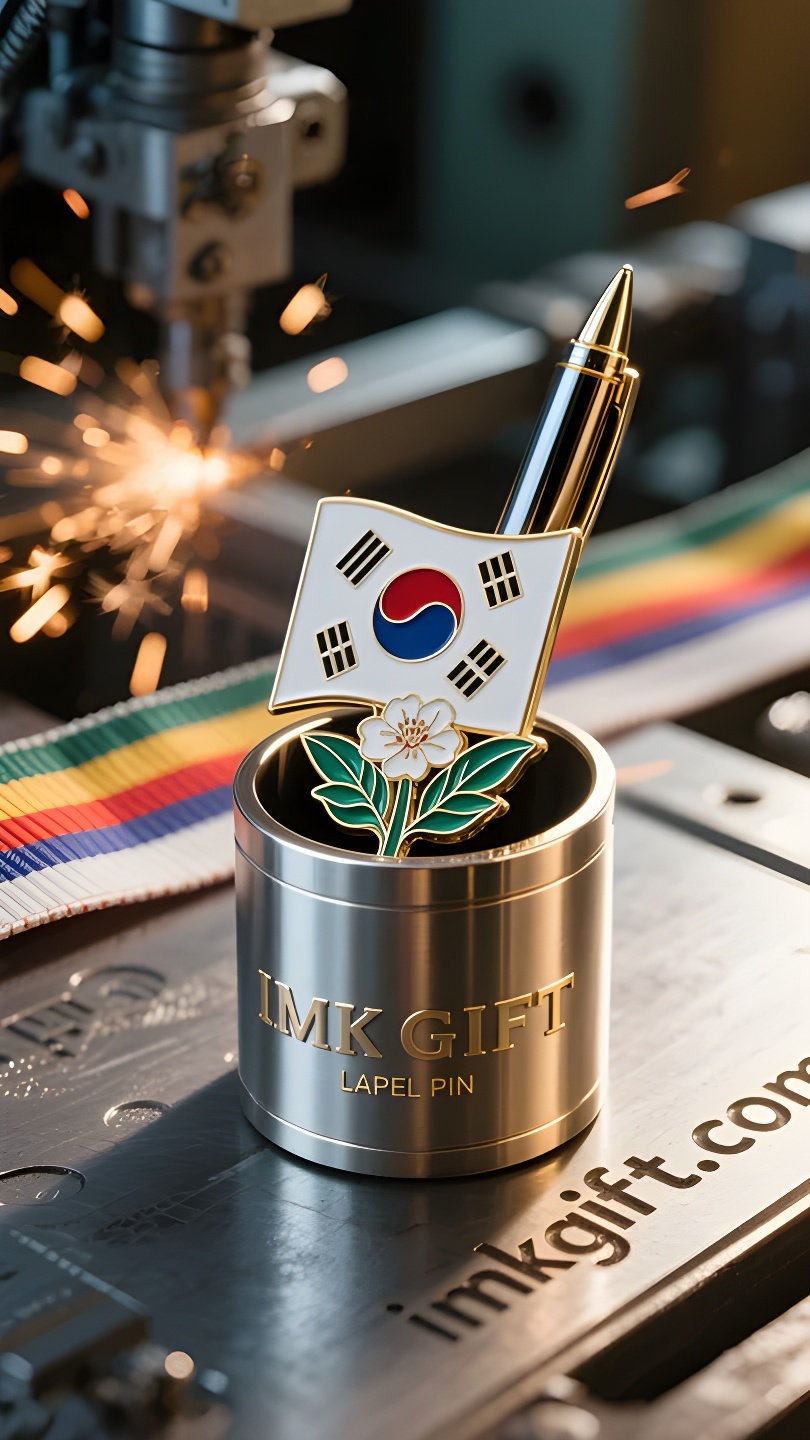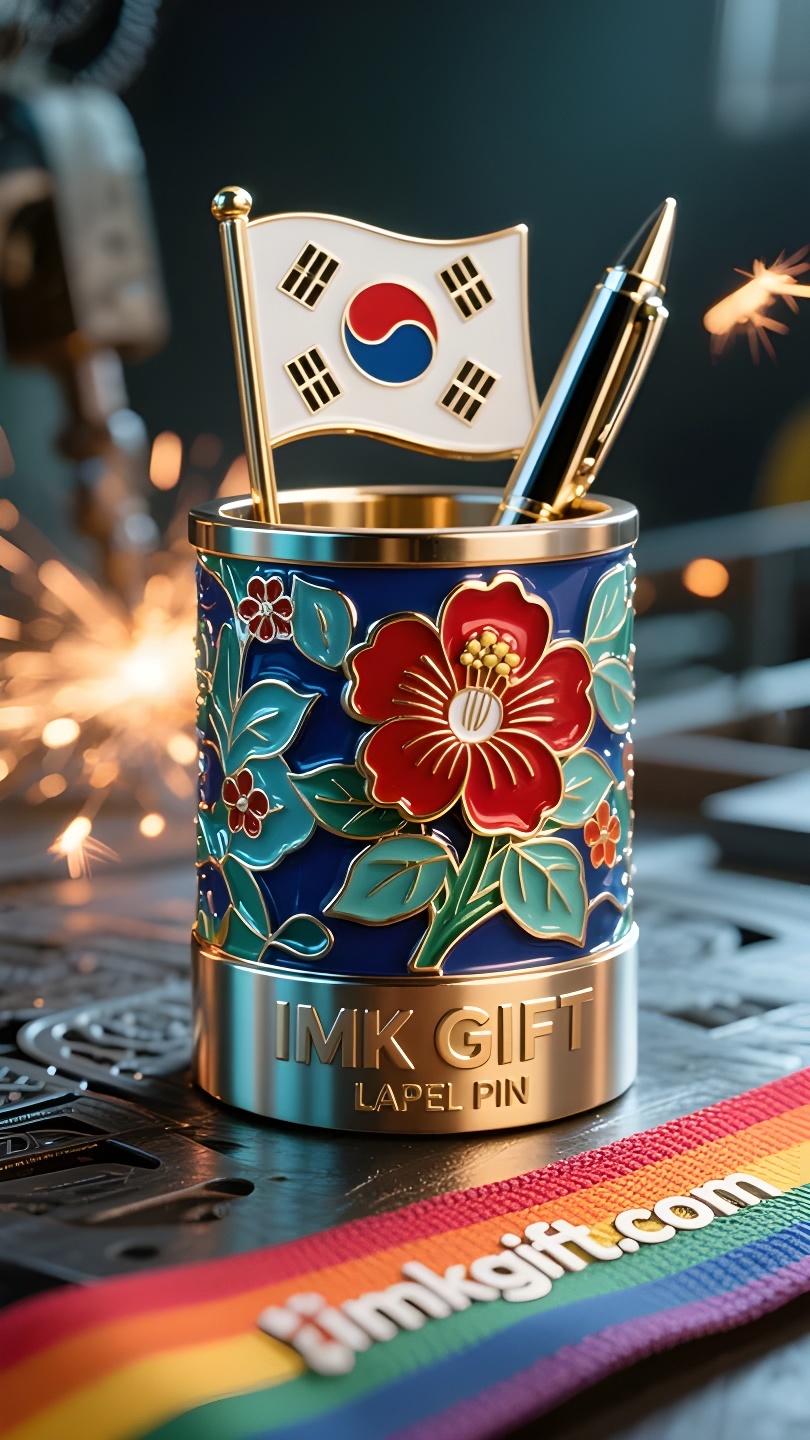in992-히비스커스-펜-홀더에-담긴-희망의-등대
▼
8월 15일은 광복절입니다. 이날 거리에는 태극기가 펄럭이고, 따스한 햇살 아래 무궁화 꽃이 만발합니다. 태극기에 그려진 태극 도안이 음양의 조화와 천지수화(天地水火)의 조화를 상징하듯, 무궁화 펜홀더는 역경 속에서도 우리 민족의 생존을 지켜주는 정신적인 가치를 담고 있습니다. ‘무궁화’라 불리는 무궁화는 비바람에 시들어도 끊임없이 피어납니다. 장인들은 이러한 생명력을 펜홀더의 문양에 새겨 넣었습니다. 펜홀더 안쪽 벽면의 태극 문양은 마치 작가의 펜 획 하나하나가 천지의 순환 속에 포함된 듯 겹겹이 둘러싸여 있습니다. 밤늦게 시험을 준비하는 학생들과 책상에서 일하는 직장인들에게 펜홀더를 돌리면 빛과 그림자 속에서 뻗어 나가는 무궁화 꽃잎을 볼 수 있습니다. 이는 폐허에서 재건된 한국의 현대사, 전쟁으로 불타버린 집들이 한강의 기적을 낳았고, 금융 위기 이후 K-POP 문화 열풍이 탄생한 것과 같습니다. 펜홀더 아래쪽의 네 괘에는 숨겨진 의미가 있습니다. 건괘는 끝없는 진보를, 곤괘는 현실적인 수양을, 간괘와 리괘는 위기와 빛의 변증법적 변화를 상징합니다. 현대 젊은이들이 꿈을 펜촉에 담을 때, 무궁화 꽃잎 다섯 장은 다섯 손가락으로 받쳐진 등대처럼 지식의 바다를 항해하는 외로운 배를 인도합니다. 올해 8월, 광복절 불꽃놀이가 밤하늘을 밝히는 때, 펜과 잉크가 가득 담긴 목화 펜홀더는 수천 가구의 책상 위에 조용히 민족 정신의 새로운 장을 쓰고 있습니다.
August 15th is Korea’s Liberation Day. On this day, the Taegeukgi flag flutters in the streets and hibiscus flowers bloom under the scorching sun. Just like the Tai Chi diagram in the national flag, which symbolizes the harmony of yin and yang and the balance of the four elements of heaven, earth, water and fire, the hibiscus pen holder carries the spiritual code of the Korean people’s survival in adversity. Hibiscus flowers are called “infinite flowers” and can bloom in sequence even after being destroyed by wind and rain. This vitality is engraved in the patterns of the pen holder by craftsmen. The Tai Chi patterns on the inner wall of the pen holder are surrounded layer by layer, as if every stroke of the pen by the writer is included in the cycle of heaven and earth. When students prepare for exams late at night and office workers work at their desks, they can always see the hibiscus petals stretching in the light and shadow when rotating the pen holder – this is just like the modern history of Korea’s reconstruction from ruins, the war burned down homes but gave birth to the Han River miracle, and the K-POP cultural wave was born after the financial storm. The four hexagrams at the bottom of the pen holder have a hidden meaning: Qian hexagram represents never-ending progress, Kun hexagram symbolizes down-to-earth cultivation, and Kan and Li hexagrams remind us of the dialectical transformation of crisis and light. When contemporary young people put their dreams into the tip of the pen, the five petals of the hibiscus flower are like a lighthouse held up by five fingers, guiding the lonely boat sailing in the ocean of knowledge. This August, when the fireworks of the Liberation Day illuminate the night sky, those hibiscus pen holders filled with pens and ink are quietly writing a new chapter of the national spirit on the desks of thousands of households.
八月十五日是韩国光复节,这一天,太极旗在街头飘扬,木槿花在烈日下绽放。正如国旗中象征阴阳和谐的太极图与天地水火四象的平衡,木槿花笔筒承载着韩国民族逆境求生的精神密码。
木槿花被称为”无穷花”,即便在风雨摧折后仍能次第绽放,这种生命力被匠人镌刻在笔筒纹路中。笔筒内壁的太极纹路层层环绕,仿佛将书写者的每一次落笔都纳入天地周而复始的循环。当学生深夜备考时,职场人伏案工作时,旋转笔筒总能看见木槿花瓣在光影中舒展——这恰似韩国从废墟中重建的现代史,战火焚毁家园却催生汉江奇迹,金融风暴席卷后诞生K-POP文化浪潮。
笔筒底部的四卦纹路暗藏玄机:乾卦代表永不停息的进取,坤卦象征脚踏实地的耕耘,坎离两卦则提醒着危机与光明的辩证转化。当代年轻人将梦想投注于笔尖时,木槿花的五片花瓣恰如五指托举的灯塔,指引着在知识海洋中航行的孤舟。
这个八月,当光复节的烟花照亮夜空,那些盛放着笔墨的木槿花笔筒,正在千家万户的书桌上,默默续写着民族精神的新篇章。
▼
Contact Us
📞 Tel: +0086-760-85286839
📧 Email: sales3@imkgift.com








